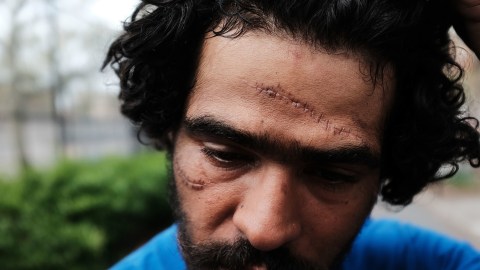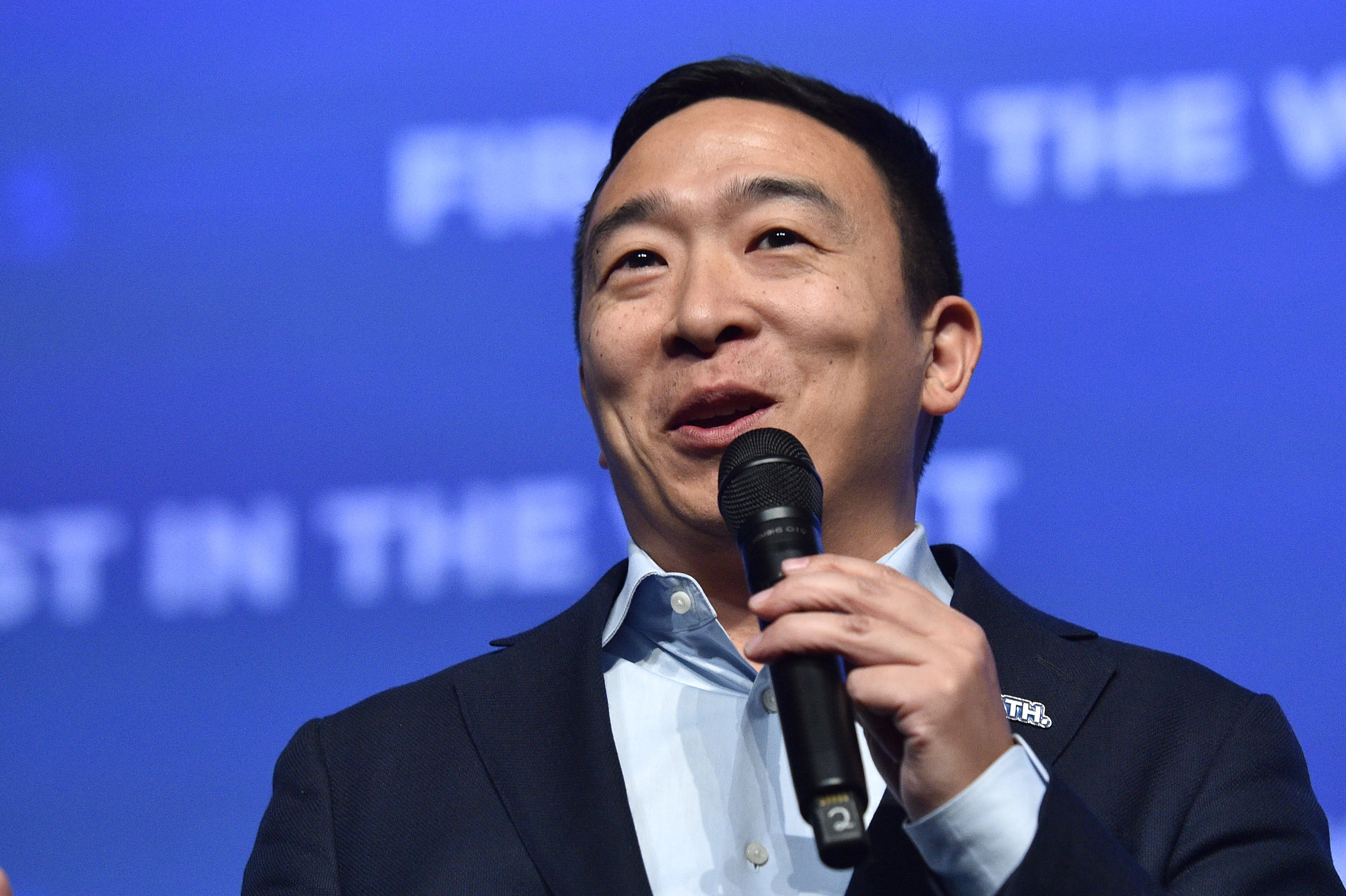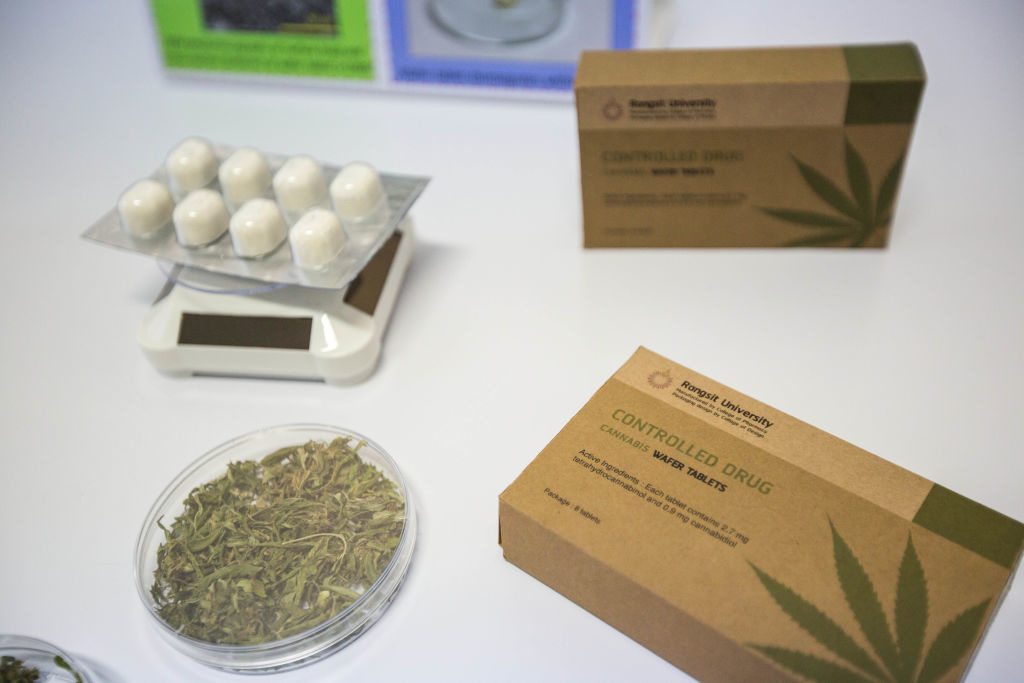The Great American Opioid Crisis: How the 2020 presidential candidates plan to solve it

Photo credit: Spencer Platt / Getty Images
- The opioid crisis in this country has drawn the attention of several presidential candidates.
- A few of the largest, most well thought out plans are examined here.
- Experts agree a huge investment in treatment is needed over a long period of time.
There is an opioid crisis in the United States. About 48,000 Americans died of opioid overdoes in 2017, an average of 130 per day. This is more than the number of car crash victims for that year or the number of soldiers killed in action in Vietnam. This incredible number of overdose deaths is a key part of the recent decline in the life expectancy of Americans.
These deaths must be viewed alongside the costs of addiction. Since 2001, the total economic cost to the United States has been in the area of $1 trillion dollars. These costs include lowered productivity, health care costs, and the costs of legal services.
Death and the destruction of lives alone don’t show the total damage done, however. The pain of addiction is unmeasurable. The strain that it puts on friends, family, and loved ones cannot be measured but is every bit as real as dry economic data.
The problem of how to prevent opioid addiction and how to treat the people who suffer from it will factor into the next presidential election. Knowing this, several of the presidential candidates have offered policy proposals on the subject. Here, we break down those proposals.
The candidates and their plans
I’ll start by saying that I did try to find the proposals of every single candidate running for the Democratic and Republican nomination. In some cases, their plans were easy to find, in others proposals were well hidden or even had to be scrapped together from previous statements.
Not everybody has much of a plan or got back to an email asking for more information. Take that as you will, I’m just glad I didn’t have to write up proposals from all two-dozen plus people. We’re not out to support the candidates we like best and smother all the others, the people on this list just put enough work in to make our job doable.

Sean Rayford/Getty Images
Elizabeth Warren
Perhaps the most comprehensive, most thought out plan belongs to Elizabeth Warren. Her plan is characteristically wonky, extensive, broad-scoped, and at least partly integrated with her myriad of other policy proposals.
Her plan, dubbed the CARE Act and based on the similarly named federal program to fight HIV/AIDS in the 1990s, would pledge 100 billion dollars to the crisis over the next ten years. According to her article on the plan, the yearly breakdown includes:
- “$4 billion for states, territories, and tribal governments.”
- “$2.7 billion for the hardest hit counties and cities, including $1.4 billion to counties and cities with the highest levels of overdoses.”
- “$1.7 billion for public health surveillance, research, and improved training for health professionals.”
- “$1.1 billion for public and nonprofit entities on the front lines, including those working with underserved populations and workers at high risk for addiction, and to support expanded and innovative service delivery of treatment, recovery, and harm reduction services.”
- “$500 million to expand access to naloxone and provide this life-saving overdose reversal drug to first responders, public health departments, and the public.”
This breakdown is designed to cover all aspects of care, from preventing addiction to harm reduction to long term support to keep people clean. It includes proposals to increase the number of treatment centers and to keep the standards of treatment high through targeted funding. All of this would be paid for through her proposed wealth tax.
She also calls for criminal investigations into the companies that produce and push opioid painkillers as part of other reform proposals centering on corporate structures.

Nicholas Hunt/Getty Images
Andrew Yang
The darling of some strange parts of the internet, Andrew Yang has risen to strange sort of fame on the back of his universal basic income plan that he dubs the “Freedom Dividend.” His plan to face the opioid crisis is also extensively thought out. The highlights of the plan on his website include:
- (He will) “Quintuple Federal funding, from $4.5 to $20 billion per year directed toward addiction treatment and rehabilitation for addictive opiates at the local levels.”
- “The FDA should allow only doctors who complete specialized education in pain management to prescribe opioids for more than a few days. All states should limit the size of prescriptions and require all opioid prescriptions to be made from hospitals instead of individual offices/practices.”
- “Direct the Dept. of Health and Human Services to focus their resources on combating the epidemic until it’s under control.”
- “Overdose patients should be sent to mandatory treatment centers for three days to convince them to seek long-term treatment.”
- “Create a centralized database of data to help analyze the trends of the opioid epidemic and better target resources”/ “Provide funding to localities to experiment with solutions that work for their communities”
It would be financed with a retroactive tax on the drug companies that manufacture opioid painkillers. This plan, while similar to Elizabeth Warren’s in many ways, differs in a few key areas. It also seems to rely more on trying to cut down on the prescription of the pills than other plans, as it includes several proposals to cut down on how many people can prescribe such drugs at all.
It also focuses attention on the importation of opioids and proposes ways to reduce it. Most substantially, he recommends leveraging continued Chinese access to American markets as a way to force China to crack down on the amount of heroin and fentanyl that is sent to the United States.

Win McNamee / Getty Images
Donald Trump
The Trump administration has made some effort to fight the crisis over the last three years. The advances made listed on the White House Website include:
- “As of October 2018, the Trump Administration had secured $6 billion in new funding over a two-year window to fight opioid abuse.”
- “To curb over-prescription, the President implemented a Safer Prescribing Plan that will cut opioid prescription fills by one-third within three years.”
- “President Trump is fighting to keep dangerous drugs out of the United States by securing land borders, ports of entry, and waterways against smuggling.”
- “In 2018, President Trump worked with Congress to pass the SUPPORT Act, the single largest legislative package addressing a single drug crisis in history.”
The battle is far from over, but some concrete progress has been made. As the Trump campaign has only officially started for 2020, they have yet to release any new proposals. However, the above actions can serve as a benchmark against which to measure new plans.

Win McNamee/Getty Images
Amy Klobuchar
A senator from Minnesota who is making a run for the middle lane of the Democratic primary. Senator Klobuchar has released a proposal to tackle both mental health and addiction treatment issues in one stroke, though some of the details seem a bit fuzzy. The highlights of her plan are:
- Preventing opioid addiction by clamping down on “Doctor Shopping” and mandating the use of prescription drug monitoring programs.
- An expansion of federal investment in research and development of non-opioid painkilling drugs.
- Investment in more treatment capacity by increasing the number of beds in-patient centers have. This is to be achieved, in part, by repelling an execution that prevents Medicaid from paying facilities with more than 16 beds.
- Prioritization of treatment over incarceration for those suffering from substance abuse.
- Expanded access to transitional housing, job training, employment, and social services to help those in recovery fully regain their footing.
This will be paid for in part by a tax on the sale of new opioid painkillers that scales to how much active ingredient is in each pill. The scale of her plan is similar to Elizabeth Warren’s and comes at the cost of $100 billion dollars.
Her plan has the advantage of being based in part on several other proposals that have already been introduced in Congress. There are also many points not included here that focus on helping those with other drug issues and mental health problems which are worth your consideration.

Mark Wilson/Getty Images
Bernie Sanders and Tulsi Gabbard
The self-described democratic socialist candidate from Vermont and the Hawaiian representative Tulsi Gabbard both cosponsored a bill to tackle the issue last year. Their plan, dubbed The Opioid Crisis Accountability Act of 2018, focuses on holding pharmaceutical companies responsible for over-prescription of the drugs.
According to Tulsi Gabbard’s website, highlights of this bill include:
- “Prohibiting and penalizing illegal marketing and distribution of opioids.”
- “Creating criminal liability for top company executives.”
- “Requiring drug makers to reimburse an HHS-led “Opioid Reimbursement Fund” for the negative economic impact of their products.”
- “Reducing market exclusivity of drug companies who illegally advertise, market, or distribute opioids.”
- “Prohibiting manufacturers who violate this act from receiving certain tax credits while establishing contemporaneous tax penalties.”
This bill is from last year, and both of the candidates have spoken about the opioid issue since then. Nothing more recent has been as comprehensive a statement as this bill, however.

Win McNamee/Getty Images
Pete Buttigieg
The youngest candidate in the race, Buttigieg has no major plan but did comment on the topic during his widely viewed TV town hall.
As mayor of South Bend, Indiana Buttigieg filed suit against the opioid manufacturers on the grounds of “deceitful practices around the level of addictiveness of these medications,” and “evidence of trying to push uses that were not appropriate.” He also expanded access to Narcan, the drug that reverses overdoses, during his tenure.
In his Fox News town hall, he expressed his support of:
- Using federal spending to expand access to treatment
- The CARE act described above
- Increasing the number of people working as “helpers” to help people through the process of rehab.
These are all great, but what do experts on the issue have to say about these plans?
Many experts have argued that only a massive plan maintained for an extended period of time, such as Elizabeth Warren’s ten-year plan or Amy Klobuchar’s and perhaps Andrew Yang’s massive funding increases, would be enough to confront the issue.
Addiction to painkillers is a terrible thing. It, and the various problems it leads to are taking a heavy toll on several parts of the country already ravaged by economic decline. No matter who wins the presidency next year, a solution to the problem will have to be found.





